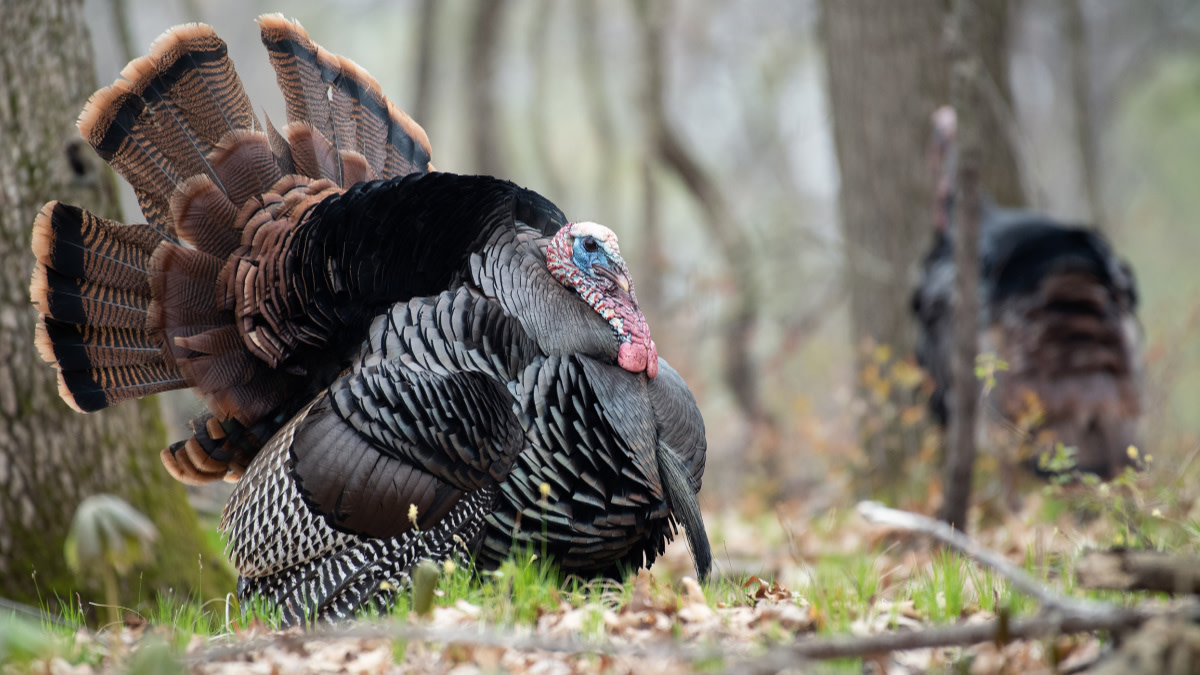
Early spring is all about field edges and open meadows for turkeys. This plays right into a hunter’s natural inclination to sit where they can see the farthest, like how deer hunters gravitate towards spots with wide visibility. This works in April, but field edge hunts are less productive as the season progresses into May.
This happens for two reasons: hunting pressure is heaviest in these areas, and food sources get better in timber later in the season. Knowing this, late spring turkey hunters should focus where the food is and hunters aren’t. Here are three spots that satisfy those two requirements.
Deep-Cover Ridges
It was the third tom of the morning that had snuck up to the field edge, gobbled, and turned back for the woods. With just two hours of hunting left, I gave up on the field edge setup. I grabbed my hen decoy, padded seat, and shotgun and started working a ridge that led to the largest tract of timber on the property.
An hour later, I was just about to sit down for a calling session when I spotted a fan down the ridge. After a couple calls, the gobbler turned toward me, as well as a hen I didn’t know was there. I watched the hen feed on all kinds of insects and fresh greens as the strutter drug her towards me. She was obviously making the most of her time feeding in the timber buffet. Later, when I was cleaning the tom, his crop was loaded with those same insects and plants the hen was dining on.
It was a lightbulb moment and made me realize that those turkeys had everything they needed on that wooded ridge—quality food and cover. And they weren’t in much danger of bumping into hunting blinds, decoy spreads, or constant calls. When your field edges dry up, get into the woods. Make a plan to hunt along ridges and other high spots when it’s relatively calm. If the wind is howling, drop down to benches and into the bottoms if necessary. Either way, find cover to locate late season birds.
Waterways
What if you don’t have big tracts of timber to hunt? This is common when targeting Merriam’s and Rios out West, and sometimes in crop-heavy states for Easterns. In either case, take another page out of the whitetail hunting playbook and look for streams or rivers and get into the best cover that surrounds them.
This is hard for some hunters to accept because they think they should be able to see birds working thin cover along waterways. But it doesn’t take much foliage to conceal a few strutters and their girlfriends. Instead of sitting the edges of drainages and trying to call birds out, get in there with them. This might necessitate a move of only 200 yards, but it will put you where the birds spend a lot of their day.
I ran into this situation in Nebraska one May when I absolutely could not buy a response in the dreamy looking patches of Sandhills cover. The chunks of public land I spent my first few days on were full of early season sign, but eventually I hiked into a drainage to run-and-gun along a small creek.
It took exactly one series of yelps to get a response, and within 10 minutes I was standing over a beautiful Merriam’s. Despite hunting all day, every day on better looking ground, this untouched scrub brush was where I filled my tag. When I think about it, that hunt reminds me of the places I actually find elk in over-the-counter units, and not the places that look like they should hold elk. Sometimes textbook habitat isn’t textbook security cover.
The Field Edge Spot on a Spot
When the mushrooms are popping and walleyes are biting come early May, fewer people want to go turkey hunting. If hunting pressure takes a major dip late in the season, it can lead to a rare resurgence of field edge activity. But it’s usually centered on specific spots that are not easy to find or easy to access.
Don’t expect to see the same behavior that you saw early in the season, though. Instead of pouring into the field to parade along fence lines all morning, hens may pick along the edges while gobblers strut 10 yards out. Or you might find yourself dealing with a May rainstorm and see random birds hitting plowed fields for earthworms. When rain starts falling, turkeys just prefer to be out in the open. Whatever the case, low spots and other out-of-sight field edge areas are where you can find birds.
So, don’t totally write off early season habitat if the hunting pressure has been declining. Find the spot the birds really want to be, either by scouting or glassing, and go there. If the birds don’t respond, forget it—get in the cover to find some that will.
Feature image via Matt Hansen.





